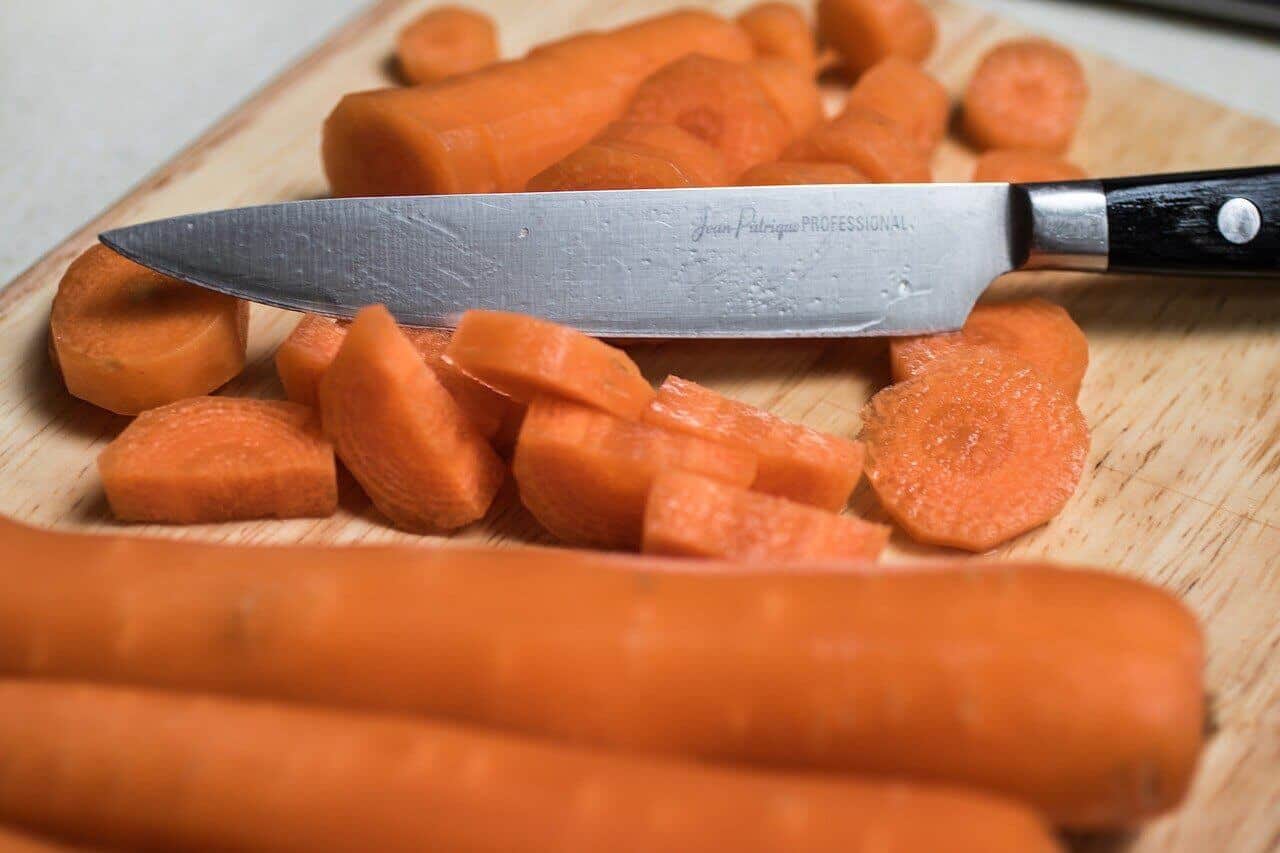Have you been struggling with the knife in your hands? Do you feel exhausted right after chopping a single carrot? Well, the chances are you’re either not using the right knife or the proper technique. Learning how to hold a knife for chopping will save you time and protect you from injuries.
That’s why today we’ll talk about the best types of knives meant for chopping, how to use these knives, popular techniques, and safety tips you need to keep in mind.
What Is A Chopping Knife?
As the name suggests, this is a knife that you use for chopping in your kitchen. It’s not a single knife type, but several that can be used for the same purpose. Before choosing one of these types, remember that you should always opt for a quality knife with a sharp edge that won’t be dangerous to anyone.
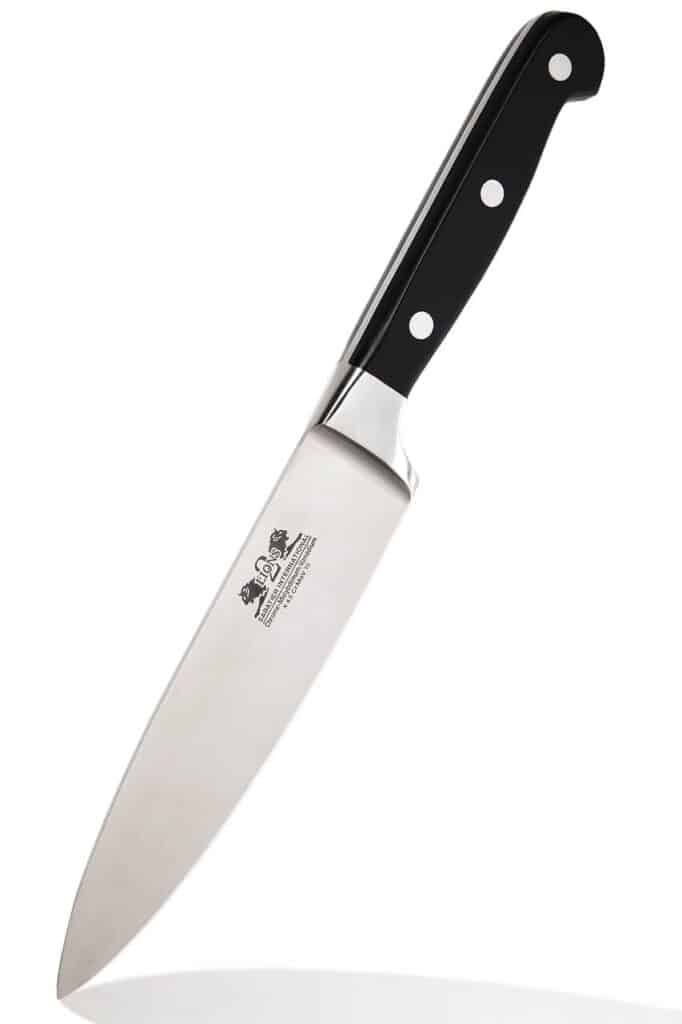
Chef’s Knives
These knives are everywhere! There is almost no kitchen without a chef’s knife, so you’re probably already equipped for chopping, slicing, and dicing. This is a type of knife that is very versatile and can be used for most kitchen tasks.
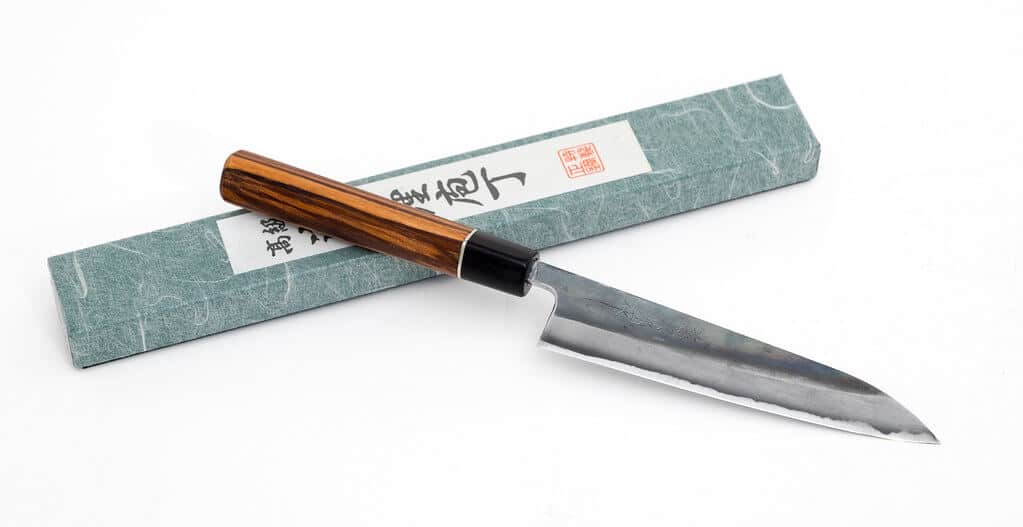 Japanese Knife
Japanese Knife
Japanese-style chef’s knives are usually light, elegant, with a thin blade and made of hard steel. You won’t have to sharpen these knives very often, but you have to be more careful because they can chip and break because of the hard and brittle material.
 German Knives
German Knives
You can expect German chef’s knives to be heavier and to have thicker blades. They use softer steel to make the knives; that’s why the cutting edge might require sharpening more frequently. Because of the soft material, these knives are not prone to chipping or breaking, and they are more flexible.
If you’re not sure which chef’s knife to opt for, we recently did a review on the Shun Classic vs Wusthof brands and their best chef’s knives. And, if you’re looking for a high-quality product, you should consider getting a forged knife.
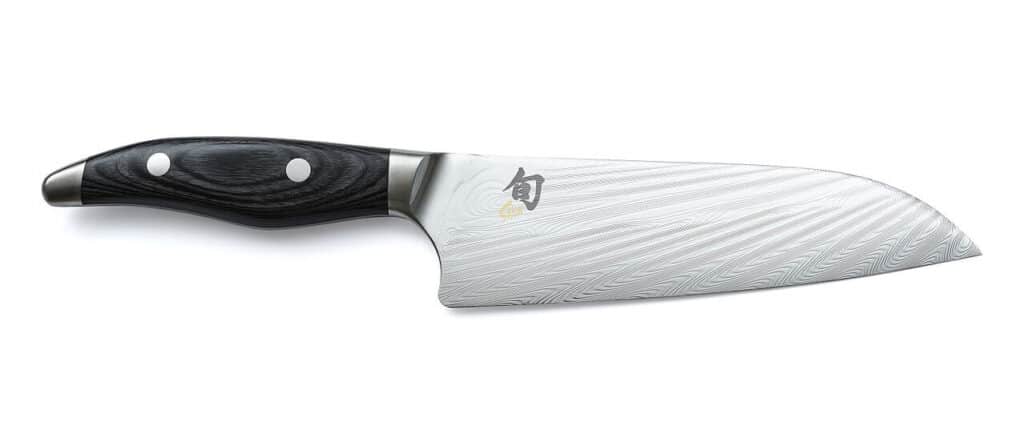 Santoku Knives
Santoku Knives
These knives remind very much of chef’s knives. Their shape is similar, and they are used for the same purpose. If you don’t have a chef’s knife at home, you can use a Santoku knife to chop your food.
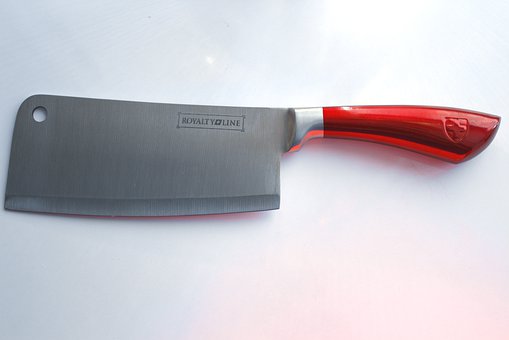
Cleavers
Cleavers look massive and hard to work with, but that’s not always the case. Most cleaver knives are made of lightweight material and a thin knife blade so that users can maneuver them with ease. Cleavers aren’t used as often for chopping in households, but they do a great job of chopping vegetables and replacing a chef’s knife.
Holding Knife Right- Why It Is Important
Holding a knife correctly is of utmost importance. Let’s not forget that this is a blade we’re talking about, and not working with it properly can lead to injuries.
- You’ll protect your fingers. If you don’t use the correct technique, the chances are you’ll cut yourself. No one likes a bleeding finger, so this is the easiest solution.
- You’ll do the job faster, so more chopped veggies for a shorter time.
- You’ll do the job like a professional. Not everyone is born to be a chef, but you can definitely borrow their techniques and use the kitchen knife right.
- You’ll chop the food better. You’ll see that all your chopped food will appear better, the pieces will appear almost the same in size.
- It’s essential for cooking enthusiasts who want to become professional chefs.
All these reasons are good enough for you to learn at least a few techniques and how to hold a knife to prevent injuries.
Cutting And Chopping Techniques
The first rule of holding a knife when chopping is that the knife is comfortable to hold. Although there are many knife types and techniques, if the one that you have in your hand doesn’t feel comfortable, you should try another one or another method.
The most basic technique is to hold the knife handle with your fingers (middle, ring, and pinkie), place your index finger on the blade on one side, and the thumb on the opposite side.
Your other hand can help you chop by holding the ingredient. You should curl the fingers while holding the vegetable or fruit to protect them from getting cut. Some other techniques you might find handy are:
-
Small Dice
Small dice might be hard to chop, but they are aesthetically pleasing. These dice should be around 1/4”.
-
Large Dice
Large dice are easier to cut and around ¾” in size.
-
The Batonnet
This is a cut that is meant for bigger slices that have a baton shape. That’s where the name of the technique came from. You can use it for carrots, chips, and more. You can also use it to create large dice.
-
Julienne Cut
This cut delivers thin slices between 1 and 2 mm. When cutting, your main goal will be to cut the vegetables into rectangular strips similar in size. The Julienne cut is best for carrots, peppers, potatoes, celery, and more. It’s often referred to as the match stick method because the strips look like matchsticks.
-
Brunoise Dice
This is a technique that you can use after the Julienne cut to get small dice. Start chopping the thin strips, and you’ll get dice.
-
Chiffonade
The chiffonade method is used for green vegetables and herbs to cut them into thin strips.
Knife Safety Tips
There is nothing more important than staying safe while using a chopping knife. The tips below are the most basic ones that might appear unnecessary but are here to protect you and the people around you from injuries.
-
Your knife Needs To Be Super Sharp
A dull knife is much more dangerous than a sharp one. So, if you notice that the knife blade is getting blunt, you need to sharpen it right away. When a knife is dull, people apply more pressure to cut, so the chances of an accident are much higher. Also, a sharp knife is much easier to use and will get the job done faster. If a knife is dull and damaged, you should dispose of it and get a new one for your collection.
-
Use A Cutting Board
Whenever you cut in the kitchen, use a cutting board. Cutting on other materials such as metal, tile, marble, or glass can be dangerous because the knife can slip, and you can hurt yourself. Also, you can cause damage to the material and the knife.
-
Don’t Get Distracted
While you’re chopping with a knife, you need to be focused. Looking at the TV is not an option. You can easily cut off a finger if you keep your eyes away from the cutting board, even for a second. The same thing applies to when you’re moving around the house with a knife in your hands.
-
Store Your Knives
When you’re done chopping, you need to wash, dry, and store the knives. Yes, all of this takes time, but try to do it as soon as possible. Don’t leave the knives around the house. If you can’t wash the knives right away, make sure they’re not a danger to anyone in the house. Don’t fill the sink with water and soap to leave the knives in. This can be damaging to the knife, and someone in your home can hurt themselves if they reach into the sink without knowing it’s full of knives.
-
Use The Dominant Hand
Always, always, always use your dominant hand when working with a knife. You need a strong, steady grip when cutting or slicing; that’s why the dominant hand should do the job. Moving the knife from one hand to another is a disaster waiting to happen.
-
Don’t Try To Catch A Falling Knife
There is no reason why you should try to catch a falling knife. You should just watch it and let it fall on the floor. If there are people around and anyone is in danger, make sure to let them know right away so that they can move. Trying to catch a knife means that you’ll probably earn a cut or two.
-
Secure The Board
The board that you’re cutting on shouldn’t move or be slippery. You can either opt for a silicone cutting board or place a damp towel under the one you already have. This will keep it in place so that you can finish the job safely.
-
Don’t Put A Knife Near An Edge
Your kitchen knives shouldn’t be near an edge. Put the knives back in the drawer and learn how to store them properly without putting anyone in danger.
Conclusion
What is a good chopping knife? This is a high-quality knife that is meant for chopping, should be comfortable in your hand, easy to maneuver, and get the job done. Although you don’t have to use all the chopping and cutting techniques that we mentioned, it’s good to know them if you want to become a professional cook.
Don’t forget to stay safe while using a knife. Make sure to use an appropriate knife for chopping, such as a chef’s knife, Santoku, or a cleaver. Wash, dry, and store the knives right away, and sharpen them regularly. If you take all the precautions and learn the techniques, you’ll be on a good path to becoming a pro.

Gary Portman is the founder and main author of Knivesadvice.com. With his extensive knowledge and experience, he is committed to assisting people in choosing the perfect knife for their needs. Through his articles, Gary shares valuable insights on various aspects of knives. With his expertise, readers can make informed decisions and find a knife that is tailored to their preferences and requirements. You can find more info about Gary here.

